
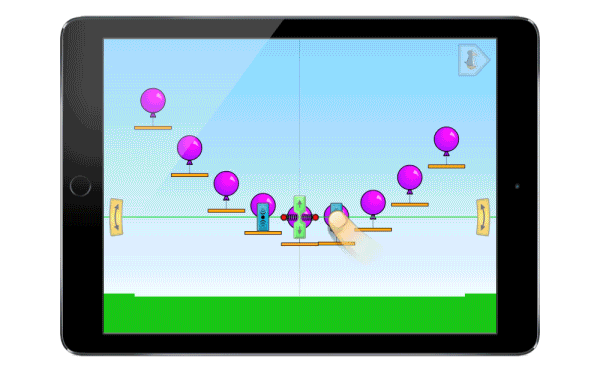
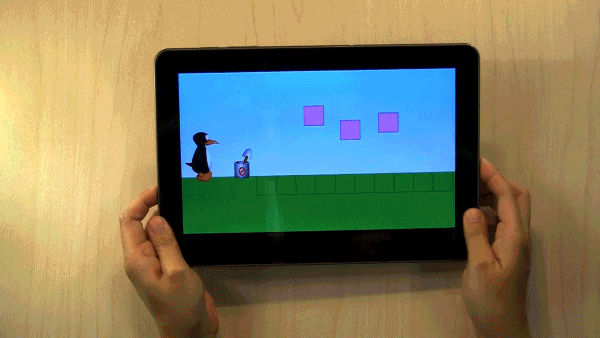
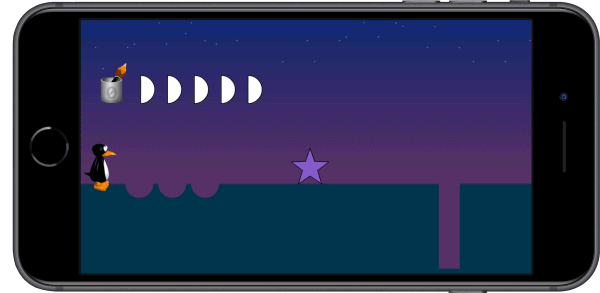

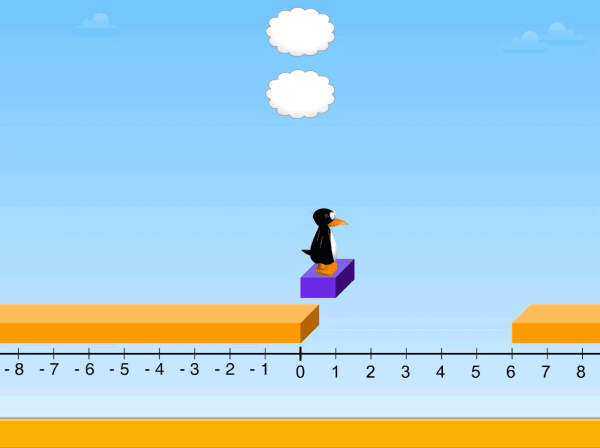
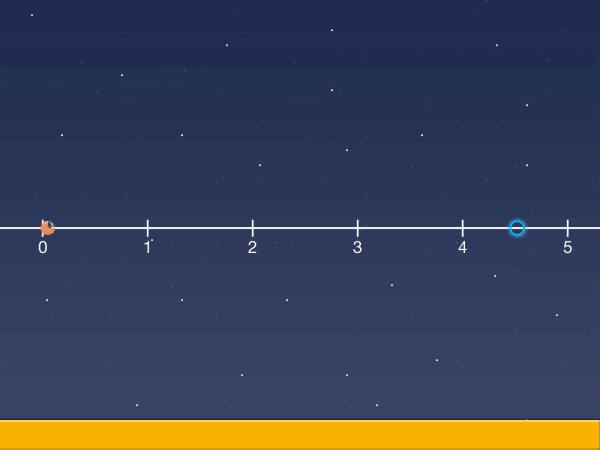
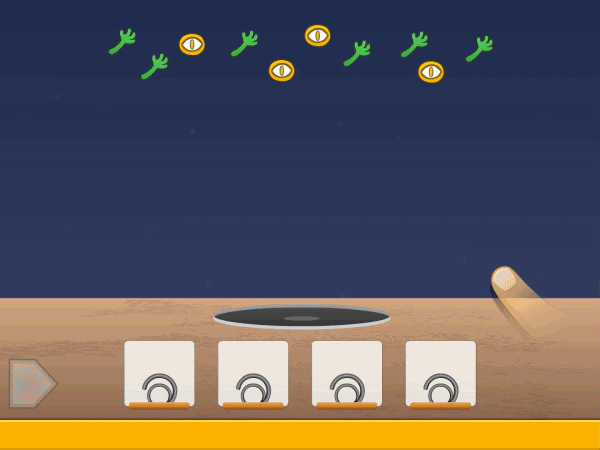
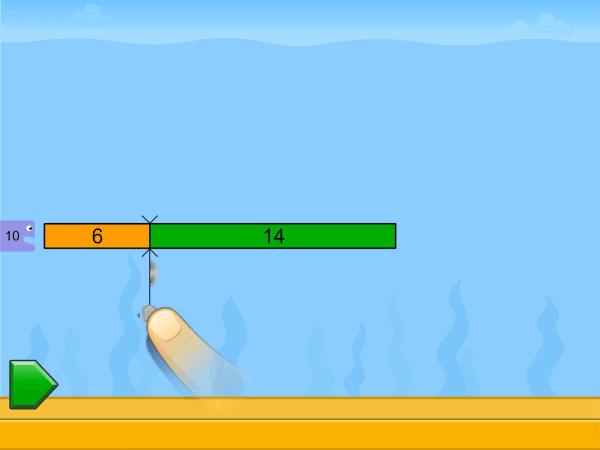
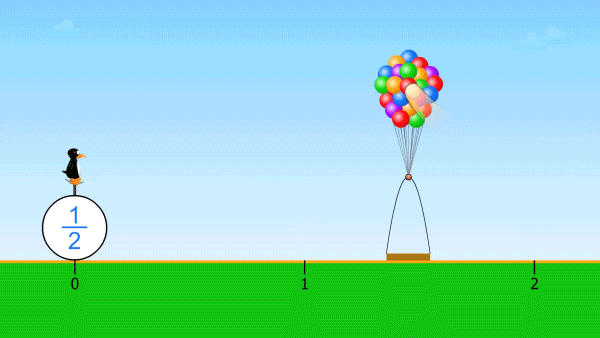
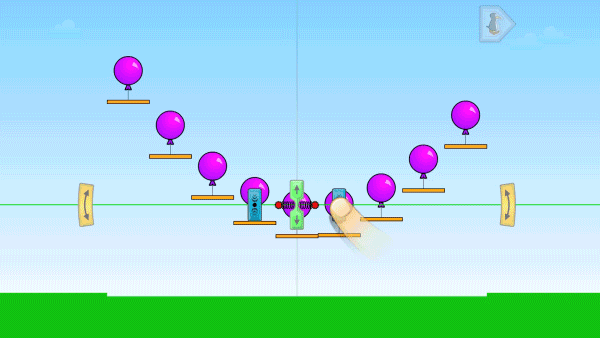
This game teaches about slope, which is how steep a line is. It demonstrates how slope is the change in x and y values, presented as a fraction. The core mechanism is built around the main character JiJi the penguin flying a spacecraft using the player's direction.
Players use the grid to calculate slope.
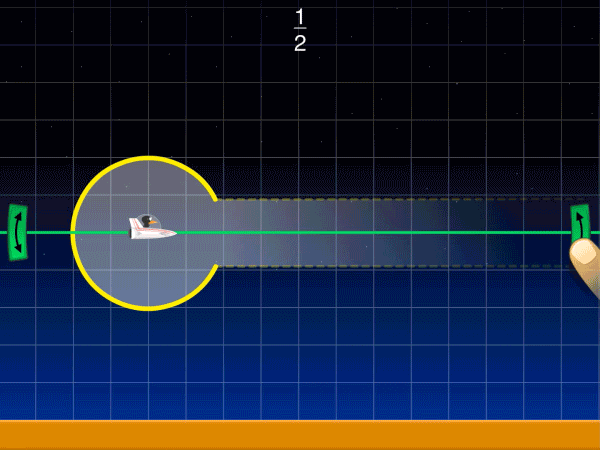
All games have input variations and scaffold through them, starting with physical manipulable inputs and ending with numeric inputs.
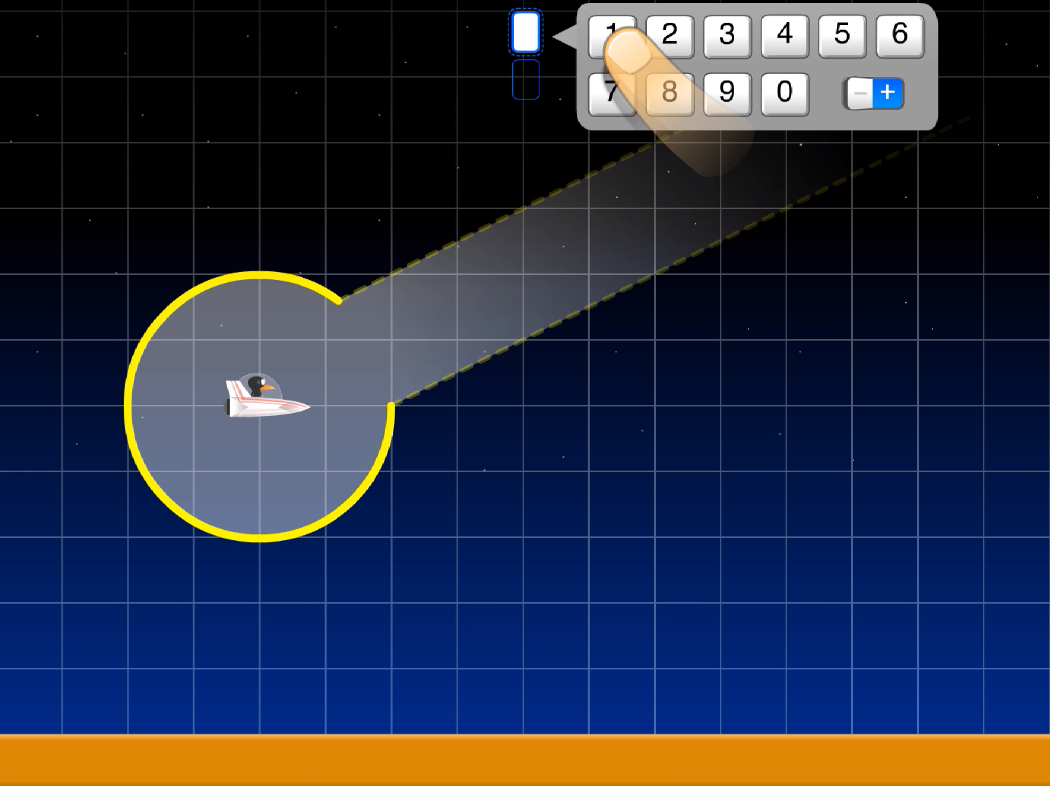
Error States are important as much of the learning is error-based, and players learn how the game works in a "learning-by-doing" fashion. All gameplay elements have to be a part of the core game design - in this case, the slope guides that the spaceship travels in act as collision points if the slope is inaccurate (too steep or too shallow).
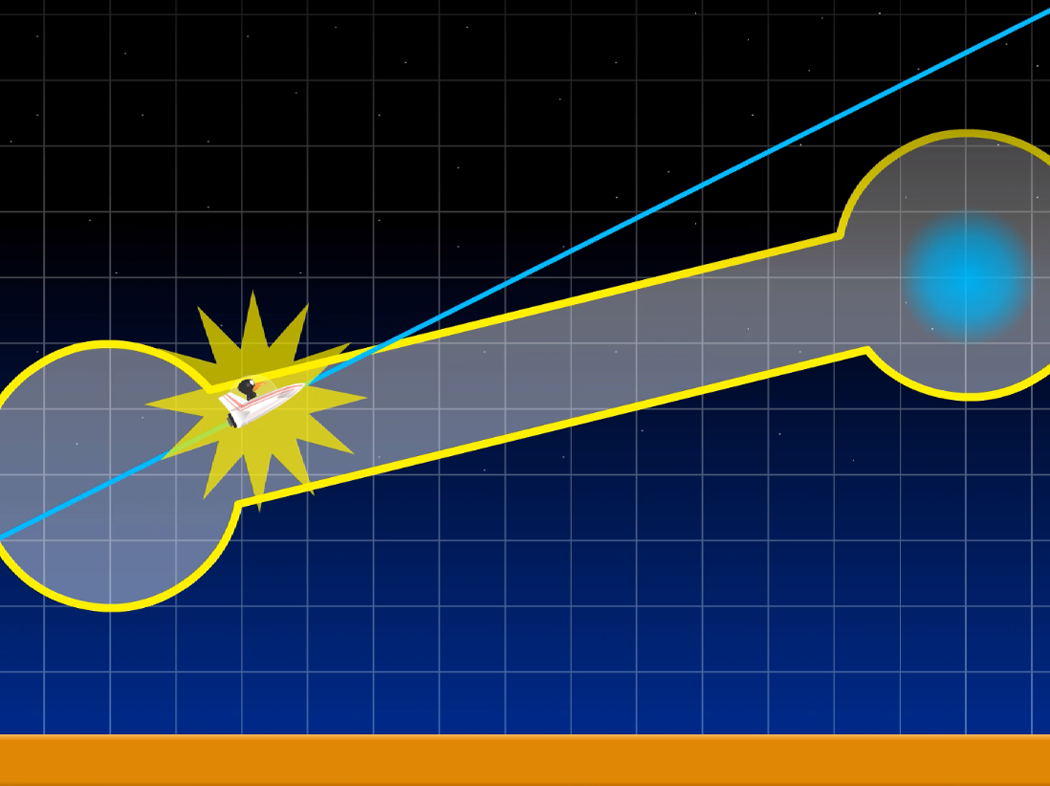
This game is a multi-level game where players use geometric principles to create mirror images of symmetric tiles, or "seeds," to tile portions of a 2-dimensional plane. It is based on research conducted by Mark Bodner, Ph.D., co-founder and President of the Research Division of MIND Research Institute. A stand-alone app version is available for free on the iOS App Store.
Players use spatial-temporal reasoning to move mirror images of tiles across the plane.
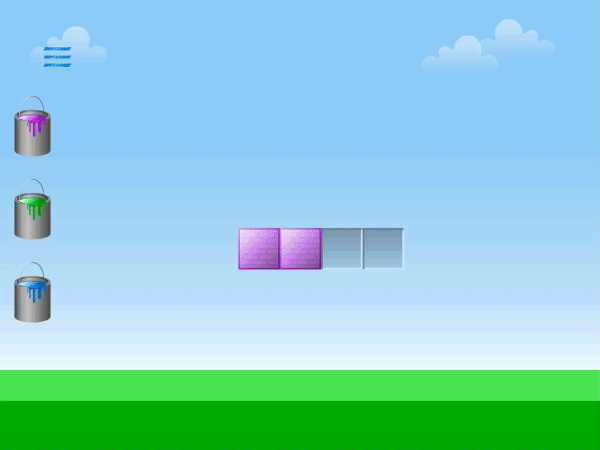
Puzzles increase in difficulty as multiple tile colors are introduced.
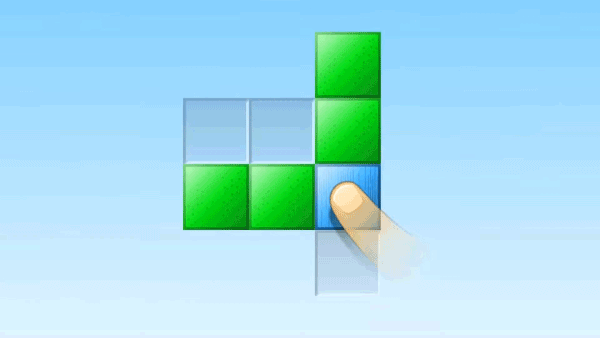
This game formed the core of a neuroscientific study into whether Working Memory could be expanded through gameplay. The core mechanism is built around tracking the changing positions of shapes until they match the puzzle piece on-screen. This game received a patent for its role in establishing the basis of the Working Memory study. Studies like these are common with ST Math games, to prove the efficacy of game teachings.
Players use working memory to keep track of shape positions as tracks move.

This game received a patent for the "method and system for enhancing working memory" as it was included in trials conducted at the University of California, Irvine to successfully test for the effectiveness of enhancing working memory capacity.
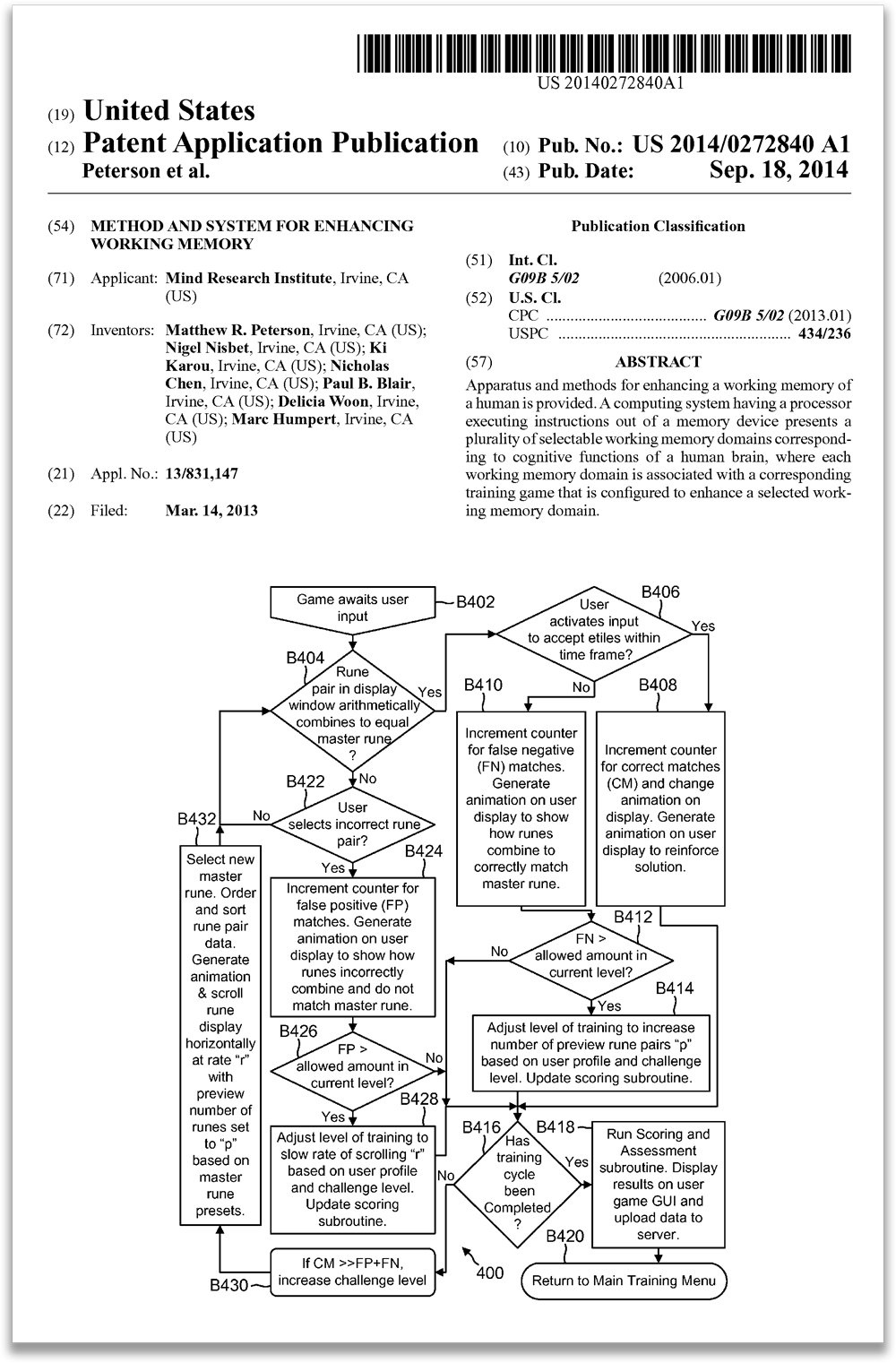
I designed and animated dozens of games for ST Math, working closely with mathematicians and product managers to develop the game content and our engineering team to code the games directly from my design files. These games are still actively part of the student curriculum today, used by over 2 million students in all 50 States:
students
educators
schools